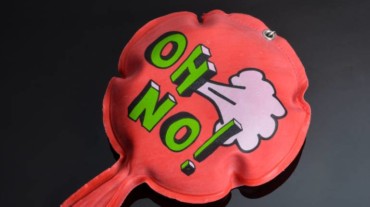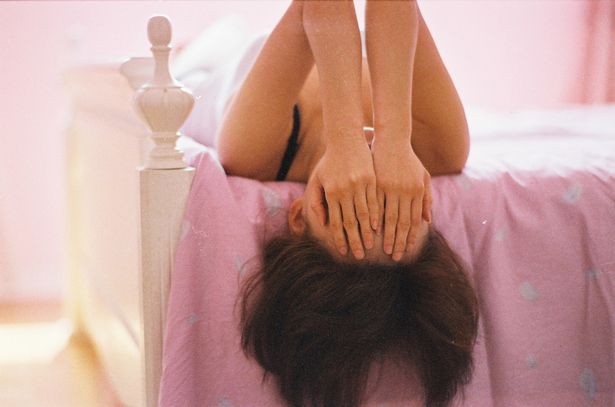Have you ever thought about why ladies fart via their vaginal openings? We understand that a vaginal fart might be embarrassing depending on the situation, but it’s only trapped air. It has no odour because it is not waste gas.

I know this is confusing, or you’ve probably never heard of it, but chill, we’ve got you. Let’s be clear on one thing: vaginal farts, also known as ‘queefs’, are not farts! A queef is an odourless trapped air pocket with no bearing on your diet. Queefs occur when air is forced into the vaginal canal and becomes stuck. But how do you get air locked up in there in the first place? Here are several ways:
- Sex – When something (such as a penis, fingers, or sex toys) is put into the vagina, it might trap air inside. The “in and out” action used to apply sexual pressure can trap air, which is subsequently released once the sexual activity is completed.
- Tampons/menstrual cups – Tampons and menstrual cups, which are put into the vagina, can potentially cause air to become trapped inside. When the product is removed, or when exercising or stretching, the air is expelled.
- Exercising/stretching – Any workout that stretches the pelvic area opens and relaxes the vaginal opening, allowing air to enter. As a result, you may hear occasional farts while exercising.
- Vaginal fistula – Fistula is a disease in which two usually unconnected organs form an unnatural hollow chamber. Consult a gynaecologist if you’ve been suffering vaginal farts for a while and are also experiencing discomfort down there.
- Childbirth – The vaginal canal is stretched out after childbirth, and it can take a long time for it to return to its normal or almost normal size. Also, the pelvic floor muscles may have weakened during pregnancy. As a result, women at these stages are more likely to queef.
Now you know the reason for queefs and that they have no smell – but are they still embarrassing? While it’s natural to feel humiliated when queefs occur during sexual intercourse, keep in mind that everyone with a vagina has them at some point.

During intimacy, our bodies create a variety of noises, similar to when our stomachs growl in a quiet room with other people. Bodily processes and noises are a normal aspect of being human, even though they might be humiliating and bring unwelcome attention. So, if it does occur, simply accept it.
However, there are several steps you may take to lessen your chances of queefing (or get used to it).
1. There’s really no way of preventing it

While it may appear like a queef only emerges from your vaginal canal at the most inconvenient moments, it may happen at any time. Because life is cruel and we have no control over our bodies’ functions, your sexiest moments are also the times when your vagina is most likely to send out a big ol’ fart sound.
However, letting out a splutter of queefs every time you have sex is quite normal — air is a gas, and gases by their very nature fill their containers, which in this case happens to be your enormous vagina.
2. There are certain positions you can avoid

Because queefs are really odourless air pockets, any position that reduces the likelihood of air entering your vagina can be beneficial. Avoid lifting your legs into the air or holding them open for long periods of time. This includes any position in which your hips are elevated above your head or your vagina is lifted into the air. Just bear in mind that doggy-style isn’t the most queef-proof position either.
During penetrative activities, you can also experiment with varied speeds, angles, and slowing down. However, if you and your spouse are both enjoying rough sex and numerous position changes, rather than adjusting your sex life to avoid a small period of potential embarrassment, simply inform your partner that, yeah, it might happen!
3. You may simply be more physiologically prone to queefing than others

Everybody is unique, and your private parts are no exception. Depending on the form and length of the vaginal canal, some women are more prone to queefing than others. Queefing is also made easier by vaginal lubrication, therefore women with naturally lubricated vaginas may queef more. This doesn’t mean you should aim to keep your vaginal area completely dry during sex to reduce your chances of queefing. In fact, please refrain from doing so. It’s not worth it to have painful sex!
4. Don’t be embarrassed

To be honest, I don’t believe anyone should try to actively ‘avoid’ a queef, because it is a very natural and widespread physiologic function. Give non-doggy-style positions more playtime in your sex life if you dislike queefing since it takes you out of the moment and makes it harder for you to orgasm. But don’t go overboard queefing for your partner’s sake. If you know you’re prone to queefing, discussing it with your partner before play can help alleviate some of your fears.
5. If it happens, just roll with it

If you’re queefing, you’re queefing! You don’t have to apologize at all, just go on. It may be humiliating, but it’s really common, and many women have experienced it at some point. The small farty toot-toots in relationships lead to the kind of long-lasting love we all crave.
After all, you’ll have to understand that life is a toot and queefs will happen.
More on women? Read this:
https://lipstiq.com/womens-health/176324/say-goodbye-to-period-pain-with-the-help-of-these-yoga-asanas/










